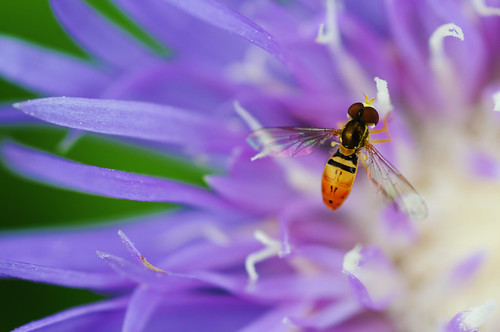I’ve talked about the Kenilworth Aquatic Gardens before; as a reminder, the gardens are best known for their lotus blossoms. They are so well known, that they attract amateur and professional photos every year. It’s very hard to get a unique shot at such a well documented location (just look through our Flickr group and you’ll see what I’m talking about). So when I saw A. Drauglis’ photo above, it just called out for special attention.
Most people when they photograph lotus blossoms focus on the petals; or, at the very least, include them in the shot. A. Drauglis’ photo completely eliminates them from the shot, deciding to only focus on the stamen. Not only does he focus on only a small part of the flower, he gets a macro shot which gives the feeling of looking inside the body of a living creature, not the outside of a flowering plant. The warm, pleasing pinks and oranges just draw the eye in; while the soft focus on the stems makes the viewer think it’s part of a dream. Truly a unique shot and well worth pouring over.
